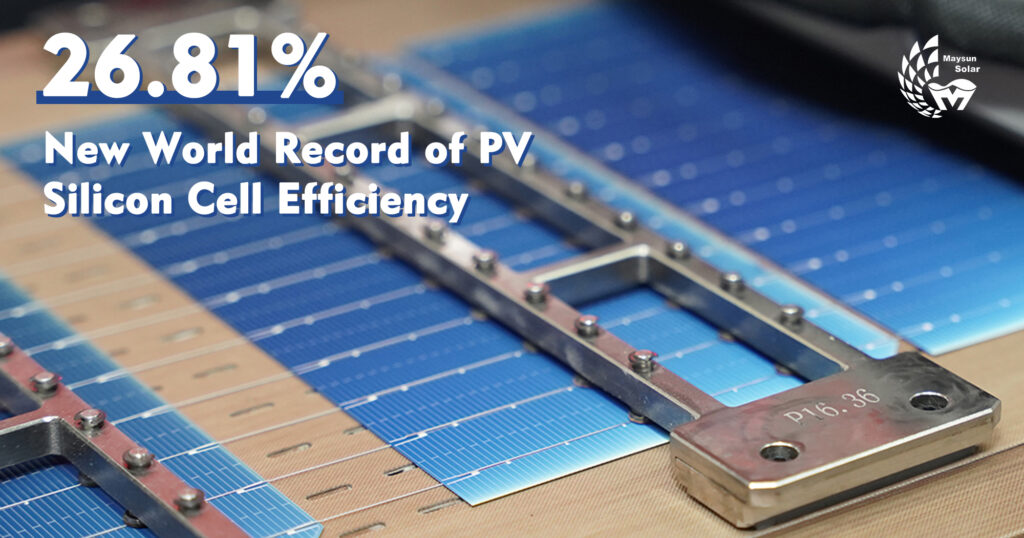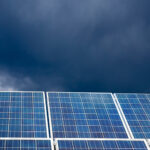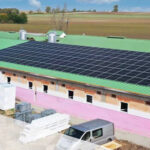Recently, LONGi Green Energy received the latest certification report from the Institute for Solar Energy Research in Hamelin (ISFH), Germany. The report shows that the conversion efficiency of silicon heterojunction cells independently developed by LONGi Green Energy reaches 26.81%, which is currently the highest record for the efficiency of silicon-based solar cells in the world, regardless of the technical route.
Photovoltaic Cell Technology
The heterojunction is a kind of solar cell technology. A solar cell is a device that converts solar energy into electrical energy by using the photovoltaic effect, and its core is a semiconductor PN junction. According to different substrate materials, it can be divided into crystalline silicon battery and thin film battery. Among them, the crystalline silicon battery is mature and is the mainstream in the current market.
The most critical indicator of solar cells is cell conversion efficiency. Before 2015, the market was dominated by aluminum back field (BSF) cells with an efficiency of 19%. Since 2015, the efficiency of PERC (Passivated Emitter and Rear Cell) cells has reached 21.5%. At present, most of the photovoltaic industry uses PERC cells or various plus versions of PERC.
With the development of various plus versions of PERC cells, it is difficult not to break through the efficiency of 22%. Everyone began to focus on the next generation technology – heterojunction battery.
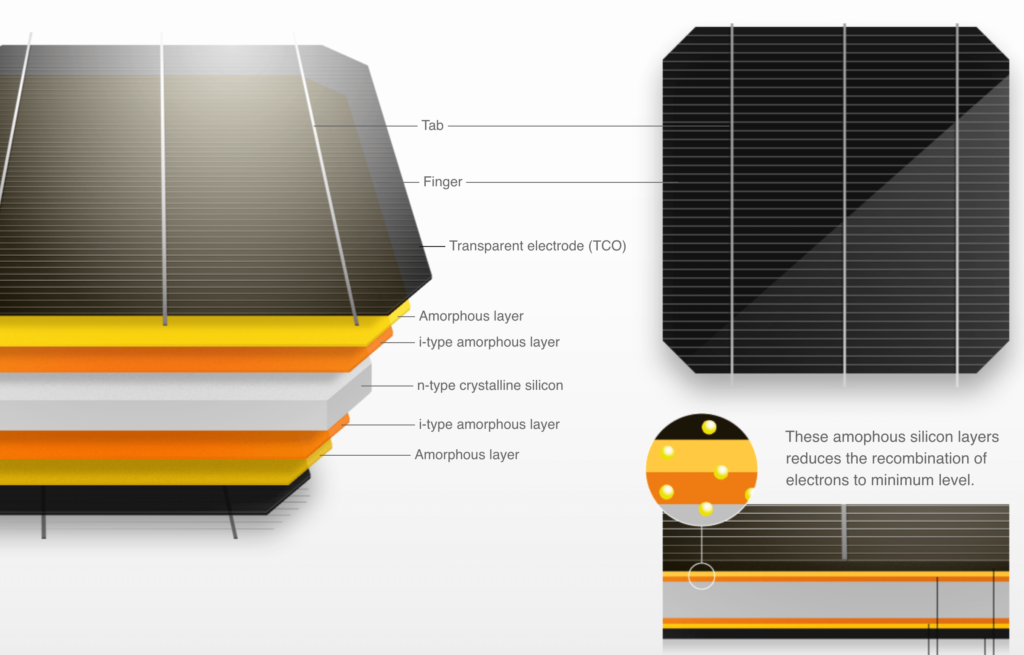
Heterojunction cells
The p-n junctions of traditional crystalline silicon solar cells are composed of the same material with opposite conductivity types—crystalline silicon, which belongs to homojunction cells. Heterojunction (HIT) is a special PN junction formed of two different semiconductor materials—amorphous silicon and crystalline silicon. It is an amorphous silicon film deposited on crystalline silicon and belongs to one of the N-type batteries. kind. Its working principle is the same as that of ordinary solar cells, the difference is that the emission level of the HJT cell is a very thin layer of amorphous silicon, thereby improving the conversion efficiency of the cell.
HIT (Heterojunction with Intrinsic Thinfilm) battery was first successfully developed by Sanyo Corporation of Japan in 1990. Because HIT has been registered as a trademark by Sanyo, it is also called HJT, HDT, or SHJ. The laboratory efficiency of HIT batteries has reached more than 26%, and the conversion efficiency of 26.81% achieved by LONGi this time is not easy for mass production. This has once again proved to the world the leading position of China’s photovoltaic technology.
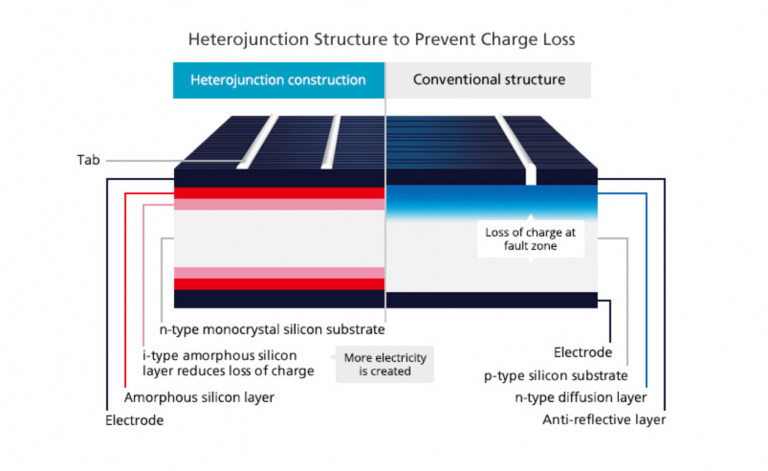
Advantages of heterojunction:
1. Ultra-high battery conversion efficiency.
2. Low process temperature. The processing temperature of all processes of HJT battery is lower than 250°C. The low-temperature process makes the optical bandgap, deposition rate, absorption coefficient, and hydrogen content of a-Si films more precisely controlled, and can also avoid adverse effects such as thermal stress caused by high temperatures.
3. It can be developed towards thinning.
4. HJT battery has no PID (light decay effect), LeTID. The unique heterojunction structure with intrinsic thin layer of HJT battery completes the surface passivation of single crystal silicon at the same time as the p-n junction is formed, making the open circuit voltage Voc>740mv and improving efficiency. Moreover, the low-defect passivation layer and the high-conductivity metal electrode greatly reduce the surface and interface leakage current, and at the same time improve the battery efficiency.
5. The temperature coefficient of HJT battery is low, which is about half of that of conventional crystalline silicon battery. Under high temperature environment, the power generation of HJT battery can increase by 6-10% compared with traditional battery. Generally speaking, under the working environment of 60° for 320w components, HJT has 15W more power than ordinary crystalline silicon cells.
6. The front and back of the HJT battery can generate electricity after being exposed to light. The back of the HJT battery can increase the power generation by 10%-20%, and the comprehensive power generation efficiency on both sides can reach 25%-28%.
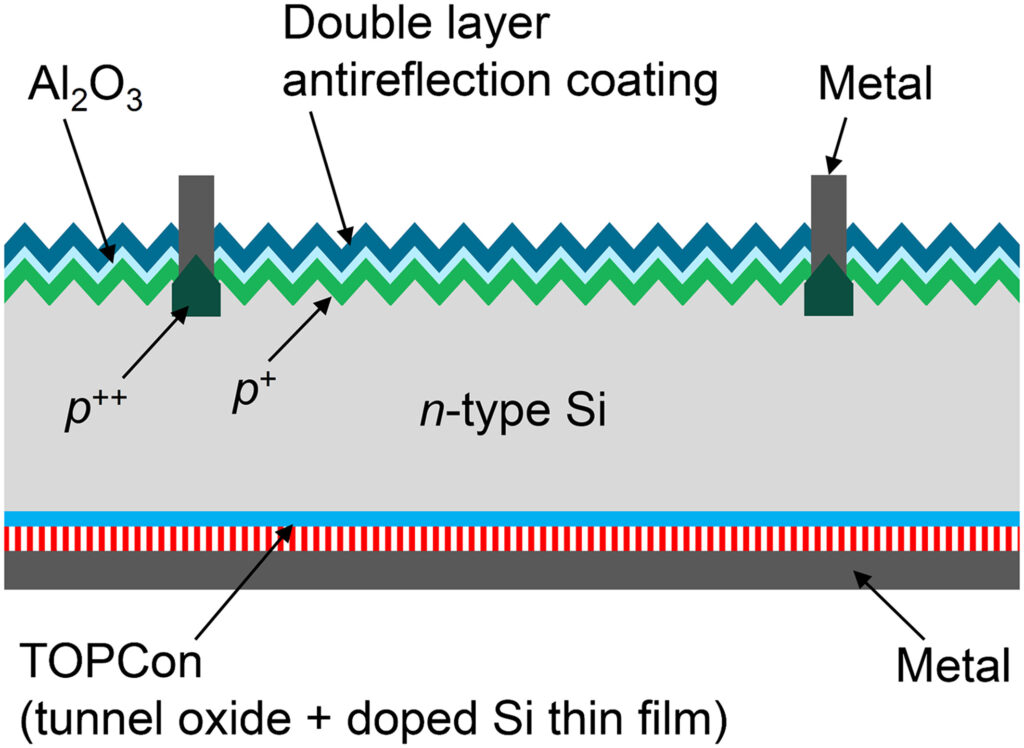
It has become an industry consensus that N-type technology is a new development direction for photovoltaic cells. HJT, TOPCon, and IBC are the main three technical routes of N-type batteries. Maysun Solar provides you with products using N-type silicon wafer TOPCon technology, please contact us for quotation.

